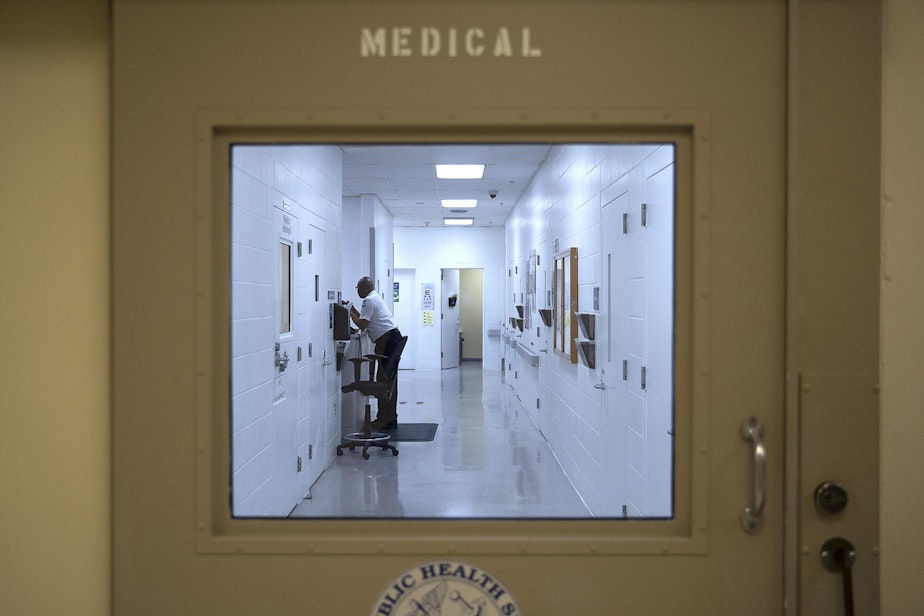When an immigrant dies in custody, how much does ICE tell the public?

Kim Malcolm talks with Human Rights Watch senior researcher Grace Meng about the death of Amar Mergensana, a Russian national who died after a suicide attempt at the Northwest Detention Center in Tacoma.
Interview highlights have been lightly edited for clarity
Malcolm: You met with Mr. Amar back in September. While you can’t talk specifically about your conversations with him, can you tell us about the situation he was in at the time you met?
Meng: I interviewed a couple of hunger strikers at Northwest Detention Center in September. They told me that in response to the hunger strike, they had been put in segregation. When they were moved to medical, they were under observation in separate rooms, and they were not allowed to speak to each other. They were also denied important privileges such as access to the law library, which can be crucial for filing an appeal of any asylum decision.
Read more: Russian asylum seeker dies after suicide attempt. He was to be expelled this month
Your organization, Human Rights Watch, tracks deaths in immigration detention. How common is suicide?
There have been a number of suicides in recent years in immigration detention. It’s not surprising given the despair people find themselves in such a confusing and bewildering system, where they are held indefinitely, not knowing when they’re going to be released. One thing that we found particularly troubling is that many of the suicides we examined reveal they had received severely inadequate mental health care before committing suicide.
After someone dies while they’re in detention in an immigration center, what typically happens?
ICE provides a press release announcing the person’s death, and then they investigate exactly how and why the person died.
Unfortunately, it is not the general rule that these investigations are released publicly. In the past, we have been able to access some of these death investigations because they were released via Freedom Of Information Act request.
When we had independent medical experts review 15 deaths in immigration detention from December 2015 to April 2017, we found that substandard medical care contributed to eight of these deaths. That’s about half of them.
This is a repeat problem that ICE has not managed to fix.
What else is missing, from your perspective, when it comes to these investigations?
What’s really striking when you read many of these investigations one after the other, is that repeat problems keep coming up in the same facilities.
For example, there were three suicides within three years at Eloy Detention Center in Arizona. In each of these detainee death reviews, ICE states clearly that the facility was missing a suicide prevention plan. Even though it was flagged with each death, you can see it occurs again with the next death.
Something so small, arguably, is not being fixed. So it makes you wonder – what is ICE going to do to force facilities to fix the larger problems?
What big questions do you still have about Mr. Amar's death?
I’m very curious to know what kind of medical and mental health care Mr. Amar received before his death. I’m greatly concerned that ICE may have known he was suicidal, and that they did not provide meaningful mental health care, because this is pattern we have seen in previous suicides.
What other information would you like to receive from ICE about Mr. Amar?
ICE should release their findings into Mr. Amar quickly – and they should release their findings in the death of others in the fiscal year of 2017-2018.
They should be clear and transparent about what’s happening so that the public can know what needs to change, and so that we can all press ICE to improve its medical care system.
In the larger picture, what reforms are you pushing for?
In the short term, we would like Congress to refuse to provide the Trump Administration’s request for funds for increased detention. This is not a system that can hold any more people; they cannot keep safe the people who are in the system now.
We would also like to see a detention system that really focuses only on detaining those that are actually a threat to public safety or are a flight risk.
Right now, the assumption is that everyone needs to be locked up – that simply is not the case. There are cheaper, more effective, and more humane ways to run an immigration system.





